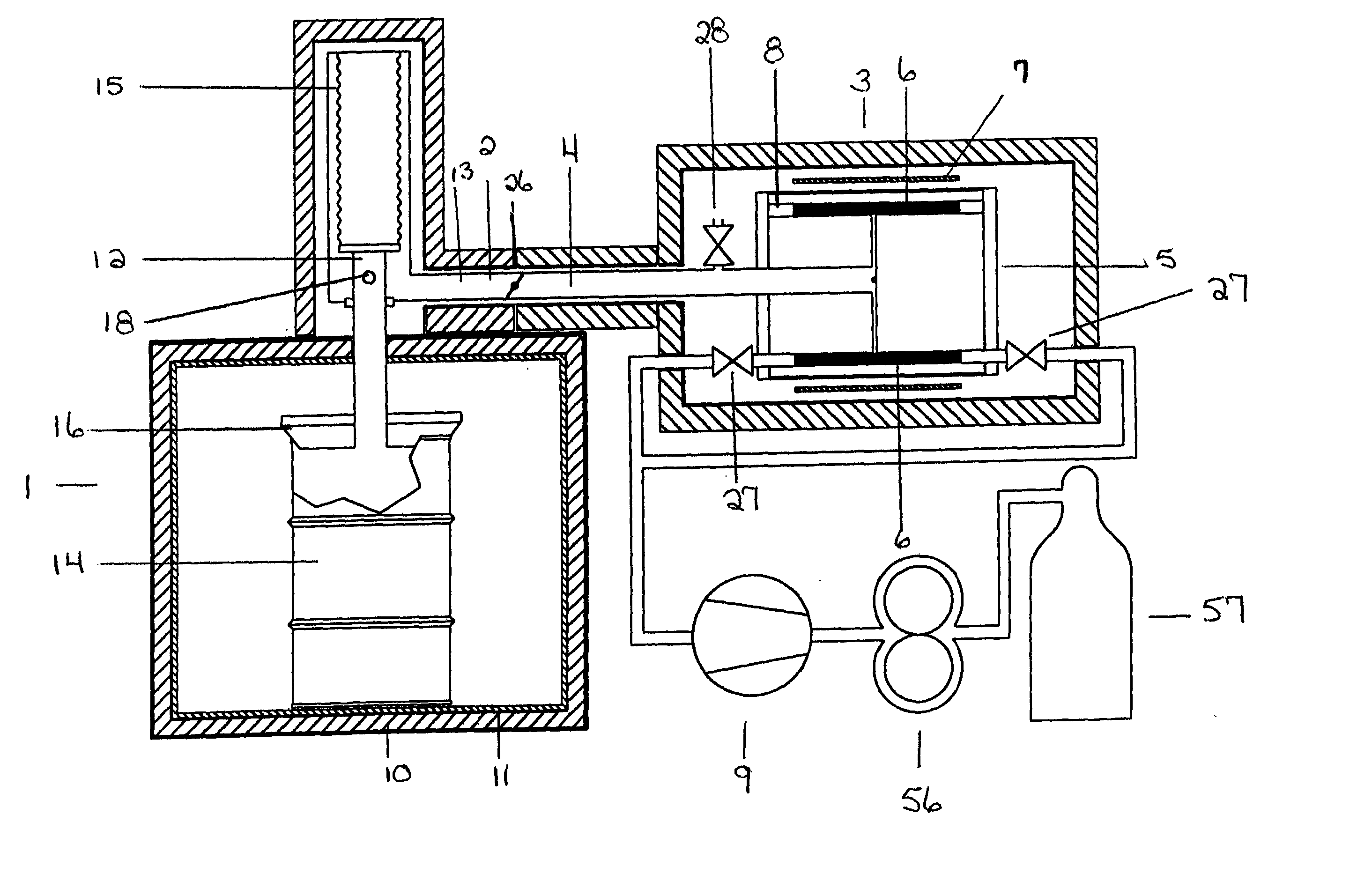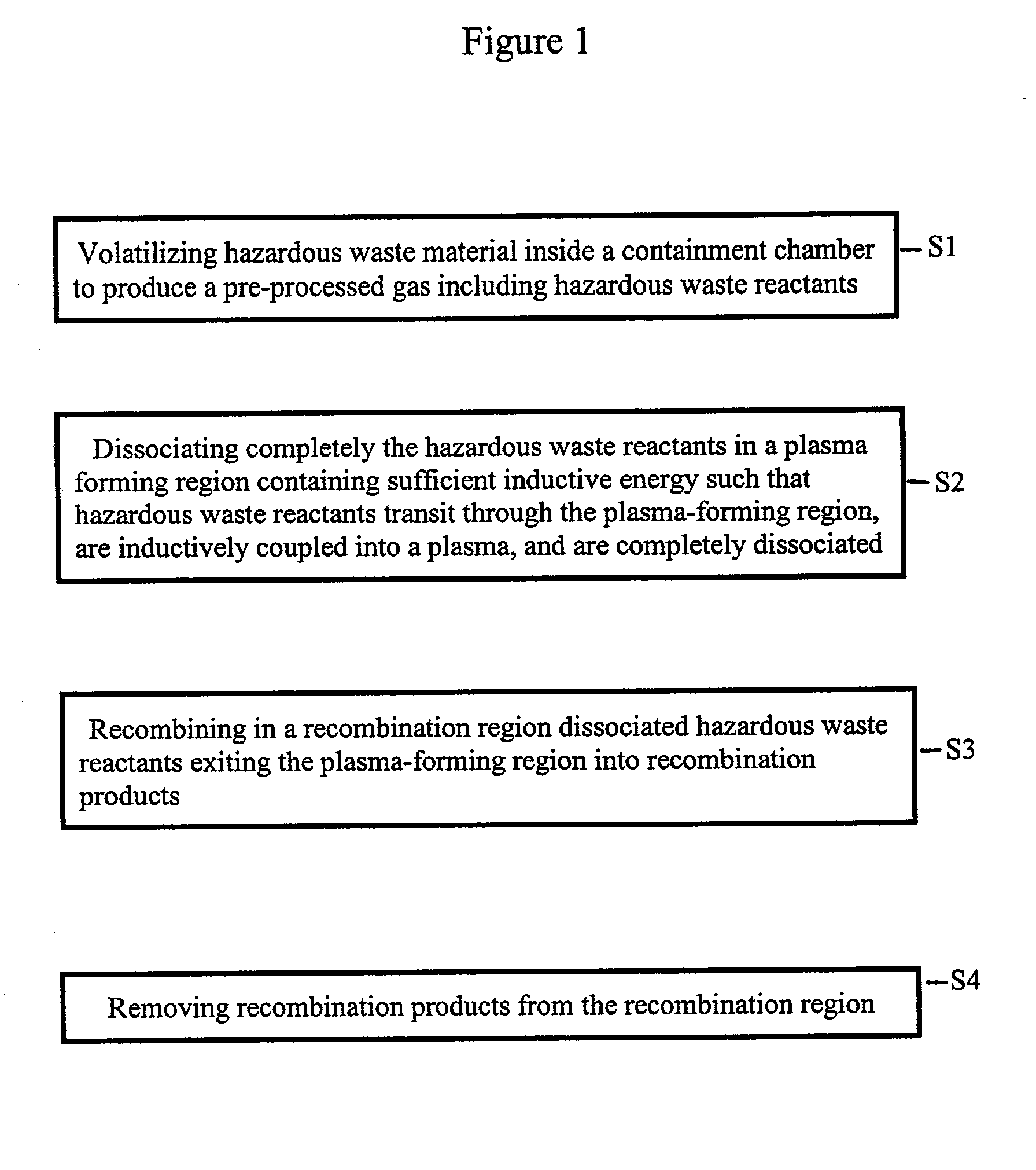Plasma furnace disposal of hazardous wastes
- Summary
- Abstract
- Description
- Claims
- Application Information
AI Technical Summary
Benefits of technology
Problems solved by technology
Method used
Image
Examples
Example
[0044] Referring now to the drawings, wherein like reference numerals designate identical or corresponding parts throughout the several views, and more particularly to FIG. 1 thereof, is a flow chart showing the method of the plasma waste disposal. The method comprises the steps of: volatilizing in S1 at sub-atmospheric pressure hazardous waste material in a containment chamber to produce a pre-processed gas including hazardous waste reactants; dissociating completely in S2 the hazardous waste reactants from the containment chamber in a plasma-forming region containing sufficient inductive energy such that said hazardous waste reactants transit through the plasma-forming region, are inductively coupled into a plasma having a magnetic skin depth, and are completely dissociated; recombining in S3 in a recombination region dissociated hazardous waste reactants exiting the plasma-forming region as recombination products, and removing in S4 recombination products from said recombination ...
PUM
| Property | Measurement | Unit |
|---|---|---|
| Time | aaaaa | aaaaa |
| Pressure | aaaaa | aaaaa |
| Electric charge | aaaaa | aaaaa |
Abstract
Description
Claims
Application Information
 Login to View More
Login to View More - R&D
- Intellectual Property
- Life Sciences
- Materials
- Tech Scout
- Unparalleled Data Quality
- Higher Quality Content
- 60% Fewer Hallucinations
Browse by: Latest US Patents, China's latest patents, Technical Efficacy Thesaurus, Application Domain, Technology Topic, Popular Technical Reports.
© 2025 PatSnap. All rights reserved.Legal|Privacy policy|Modern Slavery Act Transparency Statement|Sitemap|About US| Contact US: help@patsnap.com



